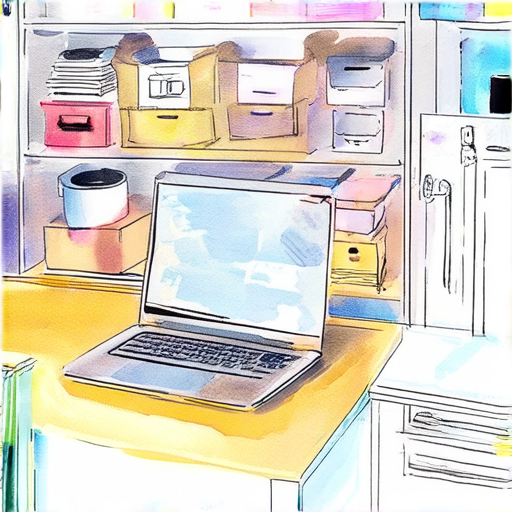For many households, finding affordable ways to stock up on essential items is a constant challenge. With the rise of online shopping, it has become easier than ever to browse through a vast array of discounted household products, but navigating the complex world of wholesale cleaning supplies, cheap household items, and bulk purchases can be overwhelming. Whether you’re a homeowner looking to save money on everyday essentials or a small business owner seeking to reduce costs on cleaning business supplies, understanding what constitutes the most sought-after household items and how to find the best deals on them is crucial.

The Most Bought Household Items
We’ve analyzed sales data and consumer trends to bring you the top household items that people love buying.
- Cleaning Supplies: From all-purpose cleaners to disinfectants, these essentials are always in demand.
- Kitchen Utensils: Spatulas, whisks, and wooden spoons are staples in every kitchen.
- Bedding and Towels: Soft sheets, plush towels, and cozy blankets are must-haves for a comfortable home.
- Lighting Fixtures: Table lamps, floor lamps, and string lights add ambiance and functionality to any room.
- Storage Containers: Bins, baskets, and shelves keep clutter at bay and organize living spaces.
- Personal Care Products: Toiletries, skincare, and haircare items are essential for daily routines.
- Home Decor: Artwork, vases, and decorative accents bring personality and style to homes.
- Appliances: Coffee makers, blenders, and slow cookers make cooking and entertaining easier.
- Tools and Hardware: Hammer, screwdrivers, and nails are must-haves for DIY projects and repairs.
- Electronics: Smartphones, tablets, and laptops connect us to the world and facilitate work and play.
These popular household items can be found at various retailers, including Amazon, Walmart, and Macy’s.
When shopping for these essentials, consider looking for deals and discounts on websites like 35OrLess, which offers curated deals on a wide range of products.
By stocking up on these popular household items, you’ll be well-prepared to tackle daily tasks and enjoy a comfortable, organized home.
Understanding Household Goods
Household goods refer to the tangible and movable personal property found within homes, encompassing a wide range of essential items.
- Beds, mattresses, and bedroom furniture
- Kitchen appliances, such as refrigerators, ovens, and dishwashers
- Cookware, cutlery, and dining utensils
- Home decor items, including artwork, rugs, and curtains
- Electronics, like TVs, computers, and gaming consoles
- Furniture for living rooms, dining rooms, and offices
- Storage solutions, including shelves, cabinets, and closets
- Personal care items, such as toiletries, towels, and bedding
- Outdoor equipment, like lawn mowers, gardening tools, and patio furniture
These goods are often purchased for personal use, and their selection can greatly impact the comfort, functionality, and aesthetic appeal of a home.
Key Characteristics of Household Goods
- Durability: Household goods are designed to withstand regular use and last for extended periods.
- Mobility: Many household goods are portable, making it easy to move them between rooms or locations.
- Functionality: Each item serves a specific purpose, contributing to the overall efficiency and convenience of daily life.
- Aesthetics: Household goods can significantly influence the visual appeal of a space, reflecting personal style and preferences.
Importance of Household Goods
Household goods play a vital role in maintaining a comfortable, organized, and functional living environment.
- Convenience: Essential items, such as kitchen appliances and cleaning supplies, simplify daily tasks and routines.
- Comfort: Furniture, bedding, and textiles contribute to a cozy and relaxing atmosphere.
- Organization: Storage solutions and shelving systems help keep belongings tidy and accessible.
- Style: Decorative items and home furnishings reflect personal taste and create a sense of identity.
Shopping for Household Goods
When selecting household goods, consider factors such as quality, durability, and functionality.
- Research: Read reviews, compare prices, and explore different brands to find the best fit for your needs.
- Quality: Invest in high-quality items that will last longer and perform better.
- Functionality: Choose goods that meet your specific requirements and preferences.
- Sustainability: Consider eco-friendly options and second-hand or refurbished items whenever possible.

What is an Essential Household Item?
An essential household item is something that every homeowner needs to live comfortably and safely.
- A bed and mattress
- A table and chairs
- A sofa or easy chair
- A wardrobe and drawers
- Carpets in living rooms and bedrooms
The Importance of Having Essential Household Items
Having essential household items can greatly impact our daily lives. They provide us with comfort, safety, and convenience. A bed and mattress allow us to get a good night’s sleep, while a table and chairs enable us to eat and socialize. A sofa or easy chair provides a comfortable place to relax, and a wardrobe and drawers give us a place to store our clothes and belongings. Carpets in living rooms and bedrooms add warmth and texture to our homes.
Practical Tips for Choosing Essential Household Items
- Consider the size and space available in your home.
- Think about the functionality and durability of the item.
- Choose items that fit your personal style and preferences.
- Don’t forget to check reviews and ratings before making a purchase.
Where to Find Affordable Essential Household Items
You don’t have to break the bank to find essential household items. Websites like Amazon and Walmart often have a wide selection of affordable items. You can also try thrift stores and second-hand shops for unique and budget-friendly finds.
Conclusion
In conclusion, having essential household items is crucial for living comfortably and safely. By choosing the right items and considering factors like size, functionality, and affordability, you can create a warm and welcoming home that meets your needs and fits your style.

Creating a List of Household Items
I’m always looking for ways to declutter my home and stay organized, which is why I love making lists of essential household items.
-
Start with the Basics
- Cleaning supplies: brooms, mops, vacuum cleaners, dustpans, cleaning solutions, sponges, scrubbers, trash bags
- Kitchen essentials: plates, bowls, cups, utensils, pots, pans, cooking oil, spices, condiments
- Bathroom necessities: toothbrushes, toothpaste, shampoo, conditioner, soap, towels, toilet paper
-
Pantries and Storage
- Food storage containers: plastic bins, glass jars, aluminum foil, ziplock bags
- Spice racks and shelves: wooden shelves, metal racks, spice containers
- Laundry supplies: detergent, fabric softener, stain removers, ironing board covers
-
Tools and Equipment
- Hand tools: screwdrivers, pliers, wrenches, hammers, tape measures
- Power tools: drills, saws, sanders, impact drivers
- Home maintenance equipment: ladders, step stools, extension cords, light bulbs
-
Personal Care and Hygiene
- Toiletries: toothbrush holders, toothpaste dispensers, soap dispensers, lotion bottles
- First aid kit: band-aids, antiseptic wipes, pain relievers, cold medicine
- Bed and bath linens: sheets, blankets, comforters, pillowcases, towels
Remember to check your inventory regularly and update your list as needed to keep your home tidy and organized!
Basic Essentials List
When preparing for emergencies or unexpected situations, having a well-stocked supply of essential items can make a significant difference.
Additional Items to Consider
Practical Tips for Building Your Emergency Kit

Creating a Comprehensive Home Inventory List
To start making an inventory list for your home, gather essential supplies such as a notebook, pen, and camera or smartphone.
- Step 1: Categorize Your Belongings
- Step 2: Document Each Item
- Step 3: Organize Your Inventory
- Step 4: Update Regularly
- Step 5: Store Digitally
- Step 6: Review and Refine
- Step 7: Consider Insurance and Valuation
- Step 8: Maintain Your Inventory
Divide your belongings into categories like furniture, electronics, kitchenware, clothing, and personal items.
Take photos or videos of each item, noting its description, condition, serial number, and purchase date.
Create a spreadsheet or table to store your inventory list, including columns for category, item name, description, condition, and location.
Schedule regular updates to your inventory list, ideally every six months or after significant changes to your belongings.
Consider storing your inventory list digitally using cloud storage services like Google Drive or Dropbox for easy access and sharing.
Regularly review your inventory list to identify missing or damaged items, and refine your categorization and documentation process as needed.
Consult with your insurance provider to determine the value of your belongings and consider investing in a home inventory app or service for added protection.
Make it a habit to regularly update and maintain your inventory list to ensure accuracy and completeness.
By following these steps, you’ll have a comprehensive and organized home inventory list that helps you keep track of your belongings and ensures you’re prepared for any situation.
